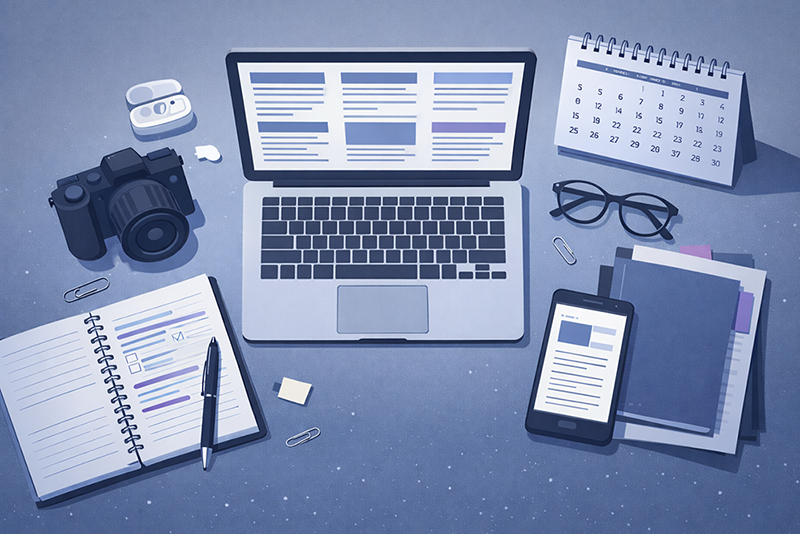For years, technology has been presented as the great lifeline of education in Latin America. First came the school labs, then the digital whiteboards, later the laptops for every child. Each wave was followed by disenchantment: machines that no one turned on, platforms that didn’t align with the curriculum, programmes that ended before anyone measured their effects. The story is well-known: initial enthusiasm, haphazard implementation, disenchantment, and oblivion.
Now comes artificial intelligence. It promises personalised learning, teachers assisted by algorithms, optimised school management. It all sounds familiar. The difference is that this time, the risks have also become more sophisticated: digital inequality is deeper, private solutions more aggressive, and regulatory capacity limited. In this context, the question is no longer whether AI will bring changes, but whether education systems are prepared for those changes to benefit everyone, not just a few.
The Inter-American Development Bank, in its report AI and Education: Building the Future Through Digital Transformation, proposes a reasoned roadmap. It’s not a hymn to innovation for innovation’s sake, but a veiled warning: either the region learns from its mistakes, or AI will be just another chapter in the long novel of unfulfilled technological promises.
AI is Not Enough: The Framework Proposed by the IDB
Even the brightest technologies (and artificial intelligence is one) can fail when applied without purpose or context. The Inter-American Development Bank states this with technical diplomacy but without mincing words: without a clear strategy, without guaranteed basic conditions, without an ethical framework that sets limits and priorities, the deployment of AI in classrooms can end up reinforcing the same inequalities it promises to combat. Or, put another way: it’s time to leave the enthusiasm for press releases and start talking about public policy.
Technology Is Not an End in Itself
The first principle proposed by the IDB seems like common sense, but it hasn’t been in recent decades: technology must serve real educational objectives, not become the objective itself. Artificial intelligence doesn’t improve reading comprehension or reduce school dropout rates just by being present. It’s a tool, not a magic wand. Why do we want AI in classrooms? For whom? With what expected results? If these questions have no answers, any implementation will be little more than an exercise in technological sleight of hand.
The report insists, with an almost pedagogical tone, on a fundamental concept: every initiative must start from a theory of change. It’s not enough to do; one must know why it’s done, what is expected to happen, and how the impact will be measured. Otherwise, AI can become what we’ve seen so many times in the region: an aesthetic novelty that doesn’t touch the root of the problems.
Five Enabling Conditions
For AI to have a positive and sustainable impact, the IDB proposes five basic conditions that must be present in any educational digital transformation strategy:
Adequate Devices. Starting point: not everyone has a computer. 94% of students in the wealthiest quintile have one at home. In the poorest quintile, barely one in three. The gap is so evident that it no longer even outrages: it has become naturalised. But it’s still there. And if AI is implemented without correcting that inequality, it will serve—as before—for those who were already well-off to be a bit better off.
Meaningful Connectivity. Not just any connection will do. The report avoids euphemisms: a network is needed that works, that can handle an entire class browsing at the same time, and that doesn’t crash when the video starts. For AI to work, one must start with the wiring.
Relevant Digital Content. This is where much of the game is played. Algorithms, no matter how intelligent, need fuel. And not just any content will do: it must be aligned with the curriculum, speak the language of the context, and have something to say beyond interactive entertainment. AI cannot become a succession of empty exercises or a catalogue of animated PowerPoints.
Teacher Competencies. No technology works without someone who knows how to use it. But this goes beyond the “training course.” The teacher must understand why to use AI, when to do so, and, above all, when not to. The report says it plainly: teachers should not be classroom technicians but critical mediators. Because if there’s no change in teaching practice, there’s no transformation that matters.
Governance and Monitoring. Last point, but no less important: this must be governed. No projects that start on a Monday and end at the end of the budget. A country strategy is needed, with institutions that accompany, evaluate, and correct. Because if something has failed before, it hasn’t been the technology. It’s been the politics (or rather, the absence of it).
Design with a Theory of Change
At the centre of every technological intervention should be a simple question: why? It’s not enough to incorporate artificial intelligence into the classroom if it’s not clear what is expected of it. The IDB suggests that any programme should start from a theory of change: a structured idea about how a particular tool can help solve a specific problem.
That implies going beyond good intentions. It means defining objectives, establishing indicators, and anticipating monitoring mechanisms. It’s, in a way, an invitation to think before acting, something less frequent than it seems in the field of educational policies.
Designing with a theory of change also forces consideration of the real conditions in which that technology will operate. It’s not the same to implement a digital platform in an urban environment with stable connectivity as in a rural area with daily power outages. Nor is it the same to work with teachers who see AI as an ally as with those who perceive it as a threat to their role.
Moreover, this approach helps avoid known mistakes: pilots that drag on without scaling, interventions that expand without evidence of impact. The IDB emphasises that technology, to be useful, must be integrated into a broader process of educational transformation, where learning is at the centre, along with equity and efficiency.
Public Policy: The Great Differentiator
Artificial intelligence, by itself, doesn’t change education. What makes the difference are political decisions: when a technology is adopted, for what purposes, under what conditions. That’s one of the central ideas of the IDB report. The impact doesn’t depend so much on the tool as on how education systems know (or don’t know) how to use it meaningfully.
The international comparison is eloquent. Countries like Vietnam or Turkey, with educational budgets similar to those of many Latin American countries, achieve better results in evaluations like PISA. It’s not about how much is spent, but how it’s managed. Long-term planning, policy continuity, coherent teacher training, functioning evaluation mechanisms. In those contexts, technology doesn’t arrive as a magic solution but as a resource to achieve defined objectives. A tool, not a slogan.
Either the region learns from its mistakes, or AI will be just another chapter in the long novel of unfulfilled technological promises.
Key Lessons for Latin America
The IDB report doesn’t propose great revelations but uncomfortable reminders. If Latin America wants to harness the potential of artificial intelligence in education, there are some lessons it would be wise not to ignore again.
Don’t Invest Only in Hardware
The story is well-known. Devices are distributed, innovation is celebrated, and after a while, the laptops end up forgotten on shelves or blocked due to lack of connectivity. The case of One Laptop Per Child (OLPC) made it clear that without adequate content, without prepared teachers, without a strategy behind it, equipment alone transforms nothing. Investing in technology also means investing in the ecosystem that makes it viable.
Prioritise Digital Equity
AI, like any technology, is not neutral. It can close gaps or widen them, depending on how and where it’s implemented. If deployed without considering existing inequalities, it will benefit those who already have more. The report highlights the need for public policies that focus on inclusion: real access to connectivity, relevant materials, and support where it’s most needed. It’s not about universalising access to technology but ensuring that technology serves everyone.
Train Teachers as Technological Mediators
The classroom still revolves around the teacher. And that won’t change no matter how sophisticated the algorithms are. AI doesn’t replace the teacher but can reinforce their work if they know how to integrate it. It’s not enough with occasional workshops or user manuals: programmes are needed that work on pedagogical knowledge, subject mastery, and digital competencies. It’s, ultimately, a slower and less flashy task than distributing devices but also more decisive.
Risks if Not Acting with Vision
Artificial intelligence offers unprecedented possibilities but also poses foreseeable dangers if integrated without a clear framework. As the IDB warns, past mistakes can be repeated, and this time with deeper effects.
Widening Gaps
AI could accentuate existing inequalities. Students with better access conditions will continue to advance, while others fall behind. Without deliberate inclusion measures, the digital divide will become an opportunity gap.
Automated Biases
Algorithms are not neutral. If fed with biased data, they can reinforce stereotypes or penalise those who need the most support. Without control mechanisms, inequality becomes part of the system.
Unregulated Market
The risk is not only technical but political. If educational AI is left in the hands of unregulated companies, key functions like evaluation or tutoring could depend on commercial interests rather than pedagogical ones.
The Need for Clear Rules
Avoiding these scenarios requires establishing ethical and regulatory frameworks that protect rights, define standards, and ensure transparency. Technology must serve education—not the other way around.
There Is Still Time

Artificial intelligence is the latest in a long line of technological promises applied to education. Like others before, it arrives accompanied by expectations, enthusiasm, and optimistic rhetoric. But if recent Latin American history has made anything clear, it is that technology, by itself, fixes nothing.
What makes the difference is public policy: how a tool is implemented, with what goals, and under what conditions. Without teacher training, equitable access, and a clear pedagogical vision, AI risks becoming just a more sophisticated version of past mistakes.
The IDB report does not offer magical solutions, but it does present a well-reasoned warning: any meaningful digital transformation must start with people, not platforms. It must look to the classroom before looking to the algorithm. And it must be sustainable—beyond the political cycle or the latest product launch.
AI will not redeem technology. But if done well, it can help us fulfil a promise that has been pending for far too long: a quality public education, for everyone.






